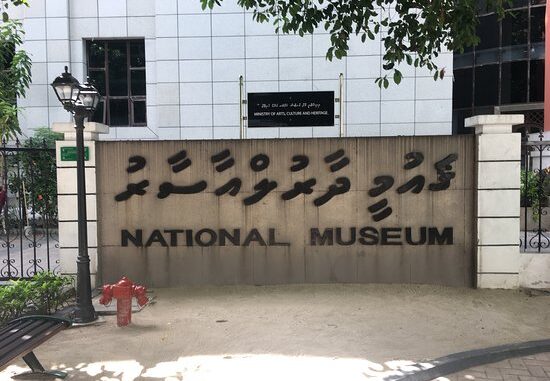
The first National Museum of the Maldives was established on the National Day of the Maldives and launched on November 11, 1952[2] by Mohamed Amin Didi, the Prime Minister at the time.
Summary :-
The museum houses a sizable collection of historical items, ranging from stone objects to pieces of royal antiques from the Buddhist era to the reign of Islamic rulers, with the aim of conserving history and fostering patriotism among the people of the Maldives.
The Maldivian Center for Linguistic and Historical Research was the previous organization in charge of the museum.[Reference required] But on April 28, 2010, President Mohamed Nasheed closed this establishment and transferred management of the museum’s operations to the Ministry of Tourism, Arts, and Culture, with the Maldives College of Higher Education receiving responsibility for linguistic and historical research.[3]
Construction :-
The three-story museum (ancient structure) is situated in Malé’s Sultan Park, which is a portion of the 17th-century Maldivian Royal Palace complex. The only surviving part of the palace destroyed by fire in 1968 is the two-story Us-gēkolhu.
Sultan Park is also home to the museum’s recently constructed structure. The Chinese government conceived, constructed, and provided the funding for the structure. The Chinese government gave the building to the Maldives on July 10, 2010, but it wasn’t until two weeks later, on July 26, 2010, Maldives Independence Day, that it was formally opened and designated as the national museum.
The handwritten Qur’an that is etched on the walls of the museum is one of the artifacts that have been preserved from the Sultanate era.
Assortments :-
The museum is home to a wide range of antiquities on display, such as remnants from the pre-Islamic era, thrones, royal sunshades, furniture, clothing, shoes, coins, jewelry, weaponry, and armor.
Additional instances encompass materials like ceremonial gowns, headgear, elaborate shoes and belts worn during important events, carpets, artistic embroidery, and lacquer work.
Among the collections’ highlights are: [citation needed]
An 11th-century artwork from Alifu Thoddoo featuring a Buddha head carved out of coral.
An etched wood board from Hukuru Miskiiy dating to the 13th century
The Sultan Ghaazee Mohammed Thakurufaanu-al-A”z”am’s Feyli Kolhu, which dates to the 16th century, is a magnificent illustration of the Maldivian weavers’ exquisite skill.
Opening times
- 10am–4pm, Sunday–Saturday (closed Friday)

